Results 9,141 to 9,150 of 12096
Thread: Anandtech News
-
02-06-19, 11:38 AM #9141
Anandtech: Comparing Two 1TB NVMe Drives with Same NAND, Same Controller: XPG SX8200
Retail drives based on the Silicon Motion SM2262EN controller have arrived. The ADATA SX8200 Pro and HP EX950 are nearly identical drives that are replacing last year's flagship models from both brands.
More...
-
02-06-19, 11:38 AM #9142
Anandtech: Keysight Reveals DDR5 Testing & Validation System
Keysight, an electronic measurement company, has introduced the industry’s first off-the-shelf testing and validation system for DDR5 DRAM. The N6475A DDR5 Tx compliance test software is aimed at developers of various products that will use the next-generation memory.
Keysight’s DDR5 testing and validation system includes the company’s N6475A DDR5 Tx compliance test software as well as its own M8040A 64 Gbaud High-performance bit error rate tester (BERT) and Infiniium UXR-Series Real-Time Oscilloscope hardware (though it can work with other hardware too). The application performs jitter, electrical, timing, as well as eye measurements, and is designed to test the transmitter PHY of DDR5 SDRAM, data buffer, and register chips. The program automatically compares the results with the DDR5 spec test limits and shows how closely the device passes or fails each test.
Previously developers of various DDR5 products had to design their own testing software or perform all the measurements and analysis manually, which greatly lengthens development time. Now that Keysight’s DDR5 Tx compliance test software and hardware is available, it will be far easier for engineers to optimize transmitter, receiver, and channel designs. So this should speed up how quickly hardware vendors are able to bring DDR5-based devices to the market..
Keysight’s N6475A DDR5 Tx compliance test software and appropriate hardware is now available. Pricing is available upon request.
Related Reading:
- SK Hynix Develops First 16 Gb DDR5-5200 Memory Chip, Demos DDR5 RDIMM
- Cadence & Micron DDR5 Update: 16 Gb Chips on Track for 2019
- Cadence and Micron Demo DDR5-4400 IMC and Memory, Due in 2019
- JEDEC: DDR5 to Double Bandwidth Over DDR4, NVDIMM-P Specification Due Next Year
Source: Keysight
More...
-
02-07-19, 09:26 AM #9143
Anandtech: The AMD Radeon VII Review: An Unexpected Shot At The High-End
After releasing a late-generation product refresh in November in the form of the Radeon RX 590, we had expected AMD's consumer side to be done for a while. Instead, AMD made a rather unexpected announcement at CES 2019 last month: the company would be releasing a new high-end consumer card, the Radeon VII (Seven). Positioned as their latest flagship graphics card for gamers and content creators alike, it would once agian be AMD’s turn to court enthusiast gamers. Now launching today – on the 7th, appropriately enough – we're taking a look at AMD's latest card, to see how the Radeon VII measures up to the challenge.
More...
-
02-07-19, 10:33 AM #9144
Anandtech: AOCís CQ32G1 Curved Monitor: 31.5 Inch, 144 Hz, FreeSync, Sub $400
Last fall AOC introduced its curved G1-series displays aimed at gamers, offering high refresh rates along with AMD’s FreeSync. This month the company has started selling its flagship G1 model, which has a QHD resolution, runs at 144 Hz, supports FreeSync, and has a 31.5 inch size. The CQ32G1 is now available both in Europe and the US at an MSRP below €400/$400.
The AOC CQ32G1 relies on a 31.5-inch curved VA panel of 2560×1440 resolution, 300-nits peak brightness, a 3000:1 contrast ratio, 1 ms MPRT response times, and a 144 Hz refresh rate. The manufacturer says that the panel can display 16.7 million colors and cover 124% of the sRGB color gamut, but does not say whether it can process any other gamuts.
Being primarily a gaming monitor, the CQ32G1 has three key selling points, including 1 ms ultra-low motion picture response time, AMD’s FreeSync dynamic refresh rate technology, as well as a 144 Hz maximum refresh rate. AOC has not disclosed the FreeSync ranges of the display and whether they are wide enough to support AMD’s Low Frame Rate (LFC) features. Entry-level 144 Hz monitors typically feature very decent FreeSync ranges from 30 to 144 Hz and do support the LFC capability.
As for connectivity, like other AOC's G1 displays, the CQ32G1 keeps the number of ports to a minimum. The monitor has a DisplayPort 1.2, two HDMI inputs (1.4 and 2.0), as well as a 3.5-mm headphone jack. To keep BOM costs in check, the manufacturer decided not to equip its G1 monitors with speakers or a USB hub since neither will be truly appreciated by the target audience. For the same reason, AOC outfitted its CQ32G1 LCD has a rather simplistic stand that can only regulate its tilt (-4° ~ +21.5°)
The AOC CQ32G1 gaming monitor is now available from leading retailers like Amazon. In the US, the product is available for $395. In mainland Europe the device will cost €399, whereas in the UK it will be priced at £359.Specifications of AOC's G1 Series Gaming Displays C24G1 C27G1 C32G1 CQ32G1 Panel 24" VA 27" VA 31.5" VA Native Resolution 1920 × 1080 2560 × 1440 Maximum Refresh Rate 144 Hz Dynamic Refresh Tech AMD FreeSync (LFC is not confirmed) Range 30 - 144 Hz (?) Brightness 250 cd/m² 300 cd/m² Contrast 3000:1 Viewing Angles 178°/178° horizontal/vertical Response Time 1 ms MPRT Pixel Pitch 0.27156 mm² 0.3114 mm² 0.3637 mm² 0.2724 mm² Pixel Density 90 PPI 81 PPI 70 PPI 93 PPI Curvature 1500R 1800R Color Gamut Support sRGB Inputs 1 × DisplayPort 1.2
2 × HDMI 1.4
1 × D-Sub1 × DisplayPort 1.2
1 × HDMI 1.4
1 × HDMI 2.0USB Hub - - - - Audio 3.5 mm Headphone Output? Proprietary Enhancements AOC Flicker Free Power Consumption Idle 0.5 W? Operating 20 W 23 W 50 W 37 W Stand Adjustments Tilt -4 ~ +21.5° -5 ~ +21.5° -4° ~ +21.5° Swivel -34 ~ +34° - - Height 130 mm - - - Pivot - - - VESA Mounts 100 × 100 mm Launch Timeframe Q4 2018 September 2018 Q4 2018 Q1 2019 Additional Information Link Link Link - MSRP $230 $280 $300 >$400
Buy AOC CQ32G1 on Amazon.com
Related Reading:
- AOC Unveils Cheap G1-Series Curved Displays with 144 Hz & FreeSync: Starting at $280
- Sales of High Refresh Gaming Displays Skyrocketing, Curved Gaming LCDs Prevail
- AOC Launches Inexpensive IPS WQHD 31.5-Inch Q3279VWFD8 Gaming LCD with FreeSync
- AOC Expands G90-Series Monitors: 144 Hz and FreeSync
Source: AOC
More...
-
02-07-19, 11:46 AM #9145
Anandtech: HiDiscís 1 TB SDXC Card with A2 Rating Now at Retail
HiDisc, a Japanese brand that belongs to Magnetic Laboratories company, has started sales of its 1 TB SDXC memory cards in Japan. The cards do not offer very high performance, but surprisingly carry the Application Performance Class 2 (A2) badge that we often only see on microSD cards for smartphones as well as tablets.
The HiDisc 1 TB SDXC card uses the UHS-I bus and is rated for up to 95 MB/s read transfer speed as well as up to 70 MB/s write speed, in line with other high-capacity memory cards. The product carries the Video Speed Class 30 badge and therefore guarantees that it features at least 30 MB/s sequential write speeds as well as simultaneous interleaving of eight different files. The latter is important for those who shoot videos in Ultra-HD resolutions (e.g., 4K, 5K, etc.)
Furthermore, it also has the A2 badge, meaning that it offers a random performance of at least 4000 read IOPS and 2000 write IOPS support as well as support such capabilities as command queuing (with a minimum depth queue of 2 and a maximum depth queue of 32) to optimize random read performance, caching to hit write performance targets, as well as self-maintenance capabilities. The A2 spec was designed to ensure that Android apps for smartphones and tablets (which use microSDs) could be installed on memory cards and run without performance issues. It is unclear which apps will be installed and run from SD cards, but it looks like either Magnetic Laboratories has certain ideas regarding applications that will use its card (Android-based drones?), or just decided to use an A2-ready SD controller inside its latest card.
It is noteworthy that HiDisc’s 1 TB SDXC card was designed to work in the range between -25° and 85°C (-13°F to 185°F), which is good enough for harsh environments. In particular, the card may be used inside cameras or drones operated in Northern or Southern countries.
The HiDisc 1 TB SDXC card (HDSDX1TCL10UI3JP3) is now available in Japan, albeit in very limited quantities. The product costs ¥39,800 ($362), which is a bit below pricing of Lexar’s 1 TB SDXC card at Amazon ($399). Meanwhile, the card is priced at ¥49,800 ($454) when purchased online. It is unknown if this card will be found outside the Japanese market.HiDisc SDXC 1 TB Card HDSDX1TCL10UI3JP3 Sequential Read Speed up to 95 MB/s Sequential Write Speed up to 70 MB/s Minimum Sequential Write Speed at least 30 MB/s Minimal Random Read Speed at least 4000 IOPS Minimal Random Write Speed at least 2000 IOPS Operating Temperatures -25° and 85°C (-13°F to 185°F) Interface UHS-I Availability 14 2019 SDA Labels A2, V30, U3
Buy Lexar Professional 633x 1TB SDXC on Amazon.com
Ian - personally I think that Mag-Lab parent company logo is an odd one.
Related Reading:
- Lexar at CES 2019: 1 TB SDXC UHD-I Memory Card Announced
- ADATA Launches Premier ONE UHS-II SD Cards: 3D MLC, Up to 290 MB/s, V90 Labels
- Sony Announces SF-G UHS-II SD Cards: Up to Nearly 300 MB/s Read/Write Performance
- Western Digital Shows Off Prototype 1TB SDXC Card at Photokina 2016
- Longsys Acquires Lexar Brand from Micron
- Micron Discontinues Lexar Business, Plans to Focus on Higher-Margin Products
Sources: Akiba PC Hotline, Magnetic Laboratories
More...
-
02-07-19, 12:18 PM #9146
Anandtech: Qualcomm Announces Snapdragon 712: A Higher Bin 710
Today Qualcomm announced a new entry into its “upper mid-range” line-up of SoCs: The Snapdragon 712. The announcement is quite surprising, as it seems the chip might possibly simply be a higher bin variant of the Snapdragon 710:
On paper, the only visible difference between the Snapdragon 712 and its predecessor seems to be a 100MHz boost on the part of the CPU cores. Qualcomm also claims that the new chip offers 10% faster graphics rendering compared to the 710, which would consecutively mean that the Adreno 616 is seeing a similar boost in its clock frequency.Qualcomm Snapdragon Upper Mid-Range SoCs SoC Snapdragon 710 Snapdragon 712 Snapdragon 675 CPU 2x Kryo 360 (CA75)
@ 2.2GHz
6x Kryo 360 (CA55)
@ 1.7GHz2x Kryo 360 (CA75)
@ 2.3GHz
6x Kryo 360 (CA55)
@ 1.7GHz2x Kryo 460 (CA76)
@ 2.0GHz
256KB L2
6x Kryo 460 (CA55)
@ 1.7GHz
64KB L2GPU Adreno 616 Adreno 616
+10%Adreno 612 DSP Hexagon 685 ISP/
CameraSpectra 250 ISP
32MP single / 20MP dualSpectra 250 ISP
triple-camera supportMemory 2x 16-bit @ 1866MHz
LPDDR4X
14.9GB/s
1MB system cacheIntegrated Modem Snapdragon X15 LTE
(Category 15/13)
DL = 800Mbps
3x20MHz CA, 256-QAM
UL = 150Mbps
2x20MHz CA, 64-QAMSnapdragon X12 LTE
(Category 12/13)
DL = 600Mbps
3x20MHz CA, 256-QAM
UL = 150Mbps
2x20MHz CA, 64-QAMEncode/
Decode2160p30, 1080p120
H.264 & H.265Mfc. Process 10nm LPP 11nm LPP
At the time of writing we can’t see any other differences between the two products. As a reminder, Qualcomm Snapdragon branding not merely covers the SoC chip itself, but the whole platform which also includes accompanying components such as PMICs, WiFi chipsets, audio chipsets as well as RF front-end solutions for cellular connectivity. Stay tuned as we try to find out more and confirm on whether the chip differs in any other way.
Related Reading- The Snapdragon 855 Performance Preview: Setting the Stage for Flagship Android 2019
- Qualcomm Announces Snapdragon 675 - 11nm Mid-Range Cortex A76-Based
- Qualcomm Reveals The Snapdragon 670 Platform: Dual Big Cores + Adreno 615
- Samsung Details 11LPP Process Technology: 10 nm BEOL Meets 14 nm Elements
- Qualcomm Announces Snapdragon 710 Platform
- Qualcomm Announces Snapdragon 700 Series Platform: Carving Out A Niche for Sub-Premium
- The Snapdragon 845 Performance Preview: Setting the Stage for Flagship Android 2018
- Qualcomm Announces Snapdragon 660 & 630 Mobile Platforms: Better Connectivity, Camera, & Compute at 14nm
More...
- The Snapdragon 855 Performance Preview: Setting the Stage for Flagship Android 2019
-
02-07-19, 01:41 PM #9147
Anandtech: State of the Union: Seagate's HAMR Hard Drives, Dual-Actuator Mach2, and 2
Seagate this week reiterated that the company is on track to launch two crucially important technologies later this calendar year. Firstly, the company plans to start ramping up its 16 TB hard drives featuring heat-assisted magnetic recording (HAMR) technology in 1H 2019. Secondly, the manufacturer intends to launch its first 14 TB HDDs featuring two actuators, up to 500 MB/s sequential read speed, and up to 160 IOPS later this year. Also the company is already testing its next iteration of HAMR that will enable hard drives with capacities up to 24 TB.
More...
-
02-07-19, 03:15 PM #9148
Anandtech: Motorola Announces Moto g7 Family Line-up
It’s been a less than a year since Motorola released its g6 line-up late last April, but today we see the company announcing new refreshes and a brand new generation of phones, introducing the new Moto g7s. The new line-up continues what seems to have become a quite established formula for Motorola, with the new phones each respectively having updated hardware and features to keep pace with the ever evolving mid-range smartphone segment.
A big change over last year’s setup is that the new Moto g7 plus and the regular Moto g7 now both come in the same form-factor, a marked difference to last year’s models where the g6 plus was a notably larger phone. The new Moto g7 power adds a new variant alongside the g7 play in terms of lower priced positioning – offering a similarly lower specced model, but which focuses on battery longevity.
Going over the specification of the new phones:
All four phone models come with major upgrades in the SoC: The new g7 and g7 power come with a Snapdragon 632, while the g7 plus comes with a Snapdragon 636. The SoCs share the same high-level CPU configuration: four Cortex A73 derived cored running at 1.8GHz, along with four Cortex A53 derived cores at also 1.8GHz. What is important to note here, is that compared to last year’s g6 offerings, all the g7 models now offer big CPU cores. In practical terms, this means that we should expect 2-2.5x performance increases in many workloads, a one-time generational jump we won’t see any time soon again in this price category.Motorola Moto g7 variants Moto g7 Moto g7 plus Moto g7 power Moto g7 play SoC Snapdragon 632
4x Kryo 250 (CA73)
@ 1.8GHz
4x Kryo 250 (CA53) @ 1.8GHzSnapdragon 636
4x Kryo 250 (CA73)
@ 1.8GHz
4x Kryo 250 (CA53)
@ 1.8GHzSnapdragon 632
4x Kryo 250 (CA73)
@ 1.8GHz
4x Kryo 250 (CA53)
@ 1.8GHzDisplay 6.2" 2270x1080 (19:9)
LTPS LCD6.2" 1570x720 (19:9)
LTPS LCD5.7" 1512x720 (19:9)
LTPS LCDDimensions 157.0 x 75.3 x 8.0 mm
172 grams157 x 75.3 x 8.3 mm
176 grams160.8 x 76 x 9.4 mm
198 grams148.7 x 71.5 x 8.1 mm
168 gramsRAM 4GB 3GB 2GB NAND 64GB
+ microSD32GB
+ microSD32GB
+ microSDBattery 3000 mAh (11.55Wh) 5000 mAh (19Wh) 3000 mAh (11.55Wh) Front
Camera8MP 1.12µm 12MP 1.25µm 8MP 1.12µm
F/2.28MP 1.12µm
F/2.2
LED selfie flashPrimary
Rear Camera12MP, 1.25µm
DP-PDAF
F/1.8 lens16MP, 1.22µm
F/1.7 lens
OIS12MP, 1.25µm PDAF
F/2.013MP, 1.12µm PDAF
F/2.0Secondary
Rear Camera5MP Depth sensor - SIM Size NanoSIM
(Dual-SIM in some markets)NanoSIM Wireless 802.11a/b/g/n,
BT 5.0 LE, NFC, GPS/GLSS/Galileo/
BDS802.11a/b/g/n/ac,
BT 5.0 LE, NFC, GPS/GLSS/Galileo802.11a/b/g/n,
BT 4.2, GPS/GLSSConnectivity USB Type-C
3.5mm headsetFeatures Fingerprint reader,
face unlockFingerprint reader,
face unlock,
stereo speakersFingerprint reader,
face unlockFingerprint reader,
face unlockLaunch OS Android 9.0 Launch Price USD $299 EUR 299€ USD $249 USD $199
Motorola has streamlined the offerings in terms of DRAM and storage capacities, and as such we see both the g7 and g7 plus offered with 4GB and 64GB base options. The g7 power comes at a lower specced 3GB/32GB option, while the g7 play only offers 2GB.
As previously mentioned, a big change in the new line-up is the fact that the new g7 and g7 plus are now actually identical form-factor devices, both coming with 6.2” 2270x1080 LCD screens. It’s to be noted that the screen is of an 19:9 aspect ratio, so don’t let the wide diameter scare you as the phone’s body still is at a reasonable 75.3mm wide. Both these variants come with a 3000mAh battery.
The g7 power also comes in a similar form-factor, but it is quite bulkier in all metrics, especially in terms of thickness as the phone figures in at 9.4mm. The bigger thickness serves to house the new 5000mAh battery of the phone, undoubtedly the feature that made Motorola market the phone as the “power” variant of the new g7 series. This variant also comes with a 6.2” 19:9 screen, however it features a lower resolution coming in at 1570x720.
The g7 play has the same low-resolution screen, but in a 5.7” diameter which makes this the smallest of the series with a lesser width of 71.5mm. The play’s smaller size also applies to its thickness which is of a more normal 8.1mm and housing a 3000mAh battery.
Camera wise, it looks like both the g7 and g7 power feature 12MP sensors with 1.25µm pixels – on the former we find a dual-pixel PDAF sensor while the latter only has a more traditional PDAF sensor. Other differences are an f/1.8 aperture lens on the g7 while the g7 power’s lens comes in at f/2.0.
The g7 plus is actually the model with the highest grade camera system: a 16MP sensor with 1.22µm pixels and an f/1.7 aperture lens. This is also the only model whose camera module offers OIS. Like on the g7, we find a 5MP depth sensor alongside the main unit.
The g7, g7 power and g7 play come with an 8MP front camera – while the g7 plus upgrades this to a 12MP unit with bigger pixels. The g7 play offers a front-facing LED flash for selfies. This latter feature is house in a display notch – the g7 plus and g7 play come with a notch design more similar to that of an iPhone X, while the g7 power has one more reminiscent of an OnePlus 6. The regular g7 comes with a teardrop notch, actually offering the highest screen-to-body ratio of the series.
The g7 becomes available today in Brazil and Mexico, and will follow up in a few day in Europe. It will also be rolled out in other global markets including North America over the coming months at a price of $299 USD. The g7 plus comes at 299€ EUR and won’t be available in NA, the g7 power and g7 play come at respectively $249 USD and $199 USD with the same global roll-out as the g7.
More...
-
02-08-19, 10:40 AM #9149
Anandtech: Xilinx Introduces HDMI 2.1 IP with 8K Support
Xilinx this week introduced a comprehensive HDMI 2.1 IP subsystem for its various cores. The IP subsustem supports resolutions of up to 8K along with other features of the HDMI 2.1 spec, such as high refresh rates and HDR. The subsystem is now ready for licensing by Xilinx chip customers.
Xilinx’s HDMI 2.1 design features the company’s high-speed I/O transceivers that support HDMI 2.1’s data rates (presumably up to 48 Gbps) along with appropriate processing capabilities. The HDMI 2.1 subsystem can be combined with Xilinx’s decoders/encoders for various codecs supporting up to 8K resolutions.
The HDMI 2.1 subsystem enables developers of chips for various applications (including professional AV equipment, cameras, media players, monitors, projectors, KVM, digital signage) to build highly-integrated SoCs that can transmit, receive and process up to 8K video as well as support a “complete” HDMI 2.1 interface. In their turn, such SoCs will replace expensive custom, non-integrated HDMI 2.1 implementations that tend to use multiple chips.
Unfortunately, Xilinx is a bit light on the details on which HDMI 2.1 features its IP core actually supports. The company confirms an 8K (7680×4320) resolution and implies on “higher frame rates and high dynamic range” along with HDMI 2.1 data rates, but does not detail exact numbers. According to HDMI Forum, companies can use HDMI 2.1 branding to designate products that support certain HDMI 2.1 features, but not necessarily all of them. Therefore, it remains to be seen which capabilities Xilinx’s IP core actually supports.
"Today's professional AV and broadcast markets continue to demand higher resolution, higher frame rates and high dynamic range, to deliver more immersive viewing experiences," said Ramesh Iyer, director of marketing, Pro AV and Broadcast market, Xilinx. "Our customers can now implement the complete HDMI 2.1 interface on-chip, creating highly-integrated designs that can natively handle 8K processing. And customers can combine this functionality with 8K lightweight mezzanine codecs for 8K over IP streaming, reducing real-estate, power consumption and BOM costs."
Related Reading:
- HDMI 2.1 Nears Release: Club3D Announces Ultra-High Speed 48G Cable
- HDMI Forum Demonstrates HDMI 2.1 VRR Capabilities on Samsung TV
- HDMI 2.1 Specification Released: Variable Refresh, Dynamic HDR, & More In 2018
- HDMI 2.1 Announced: Supports 8Kp60, Dynamic HDR, New Color Spaces, New 48G Cable
Source: Xilinx
More...
-
02-08-19, 02:09 PM #9150
Anandtech: Akasa's Turing: A Passively-Cooled Chassis for Intelís Bean Canyon NUC
Akasa is prepping an aftermarket chassis for Intel’s 8th Gen "Bean Canyon: NUC systems. The Turing chassis will allow Intel’s NUC 8 ultra-compact form-factor (UCFF) computers to be converted to fanless systems, eliminating the noise that they produce.
Intel's Bean Canyon NUC systems are based on the company's 8th Gen Core i3/i5/i8 processors, which offer two or four cores as well as Iris Plus Graphics 655 (GT3e) iGPU. Theu are designed for users who need better graphics performance in a very compact form-factor. Apart from a 28 W CPU, Bean Canyon PCs also pack up to 32 GB of DDR4 memory, an M.2-2280 PCIe 3.0 x4 or SATA SSD, a 2.5-inch storage device, a Thunderbolt 3 controller to plug in an external graphics or storage sub-system, a 802.11ac Wi-Fi solution, and just about everything else that one comes to expect from an UCFF PC. Needless to say, the compact system packs a lot of heat, and as a result it uses a blower-based cooler in order to keep it in check
However Akasa has decided to do one better, and is putting together a chassis for Bean Canyon that allows the NUC to be converted into a passive, silent system.
Akasa is already known for its Galactico chassis (its scheme is depicted below) for Intel’s Skull Canyon NUC aimed at users seeking for UCFF gaming PCs. Based on the pictures of the Turing case published by FanlessTech, the upcoming chassis for Intel's Bean Canyon uses the same principle as its predecessor: it has a large CPU heat exchanger featuring multiple heat pipes that transfer heat from the processor to massive radiators. While the Galactico features two aluminum radiators located on the sides of the chassis, the Turing features an additional radiator above the CPU as well.
Quite naturally, Akasa’s Turing and Galactico chassis make Intel’s NUC systems considerably larger than they originally are, but they eliminate all the noises that these PCs produce. Furthermore, they retain all the I/O ports that the computers have, including GbE, USB Type-A/Type-C, TB3, HDMI, DP, audio, microSD, and even antennae fitting holes.
According to FanlessTech, Akasa will launch its Turing chassis shortly. Pricing is uknown, but it is likely that it will be comparable to a ~$200 MSRP of the Galactico.
Related Reading:
- Intel Officially Launches Bean Canyon NUCs with Coffee Lake-U Processors
- Intel’s Crimson Canyon NUCs with Cannon Lake CPU & Radeon dGPU Available for Pre-Order
- The Intel NUC8i7HVK (Hades Canyon) Review: Kaby Lake-G Benchmarked
- Intel NUC8i7HVK (Hades Canyon) Gaming Performance - A Second Look
- The Intel Skull Canyon NUC6i7KYK mini-PC Review
Source: FanlessTech
More...
Thread Information
Users Browsing this Thread
There are currently 12 users browsing this thread. (0 members and 12 guests)





 Quote
Quote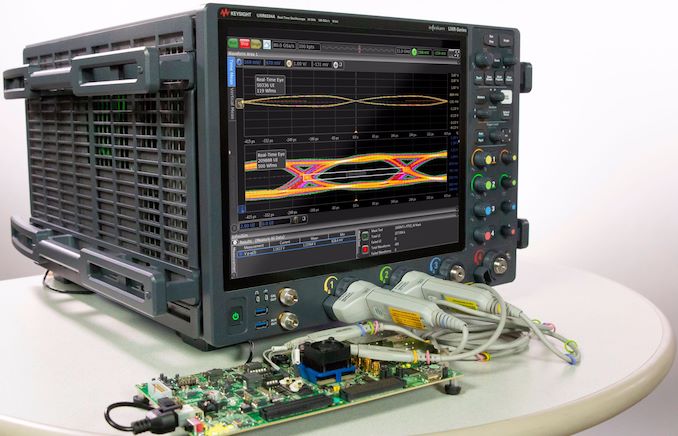
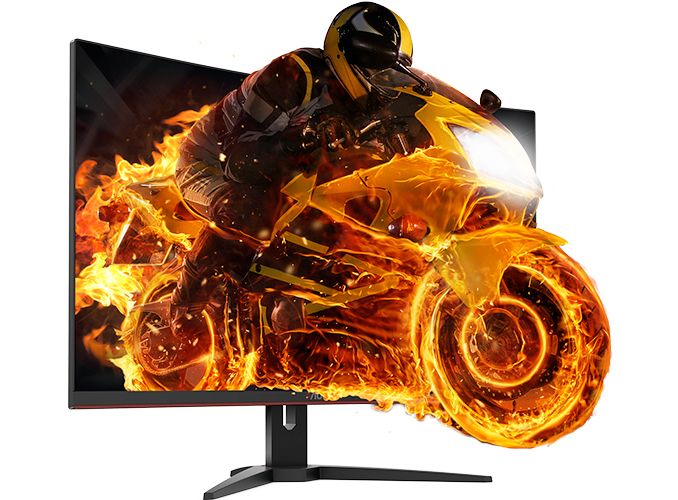
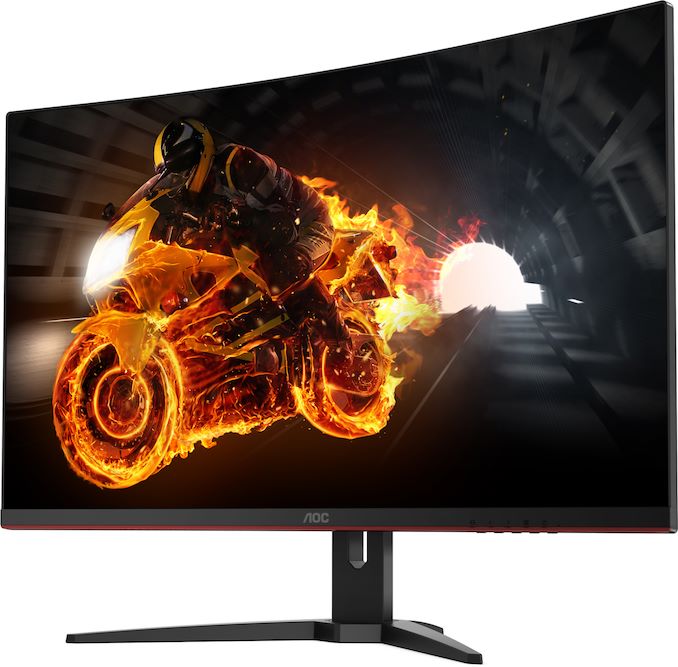
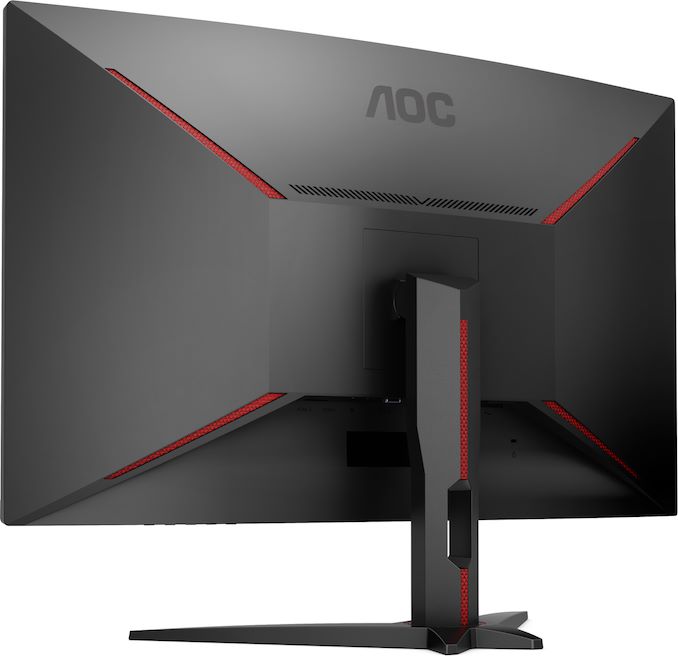
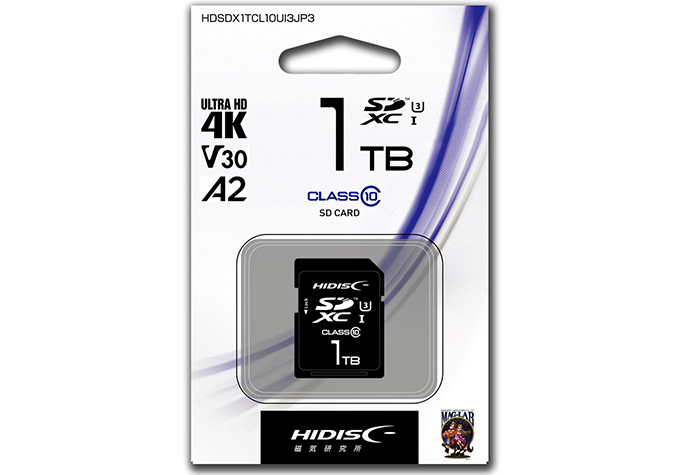
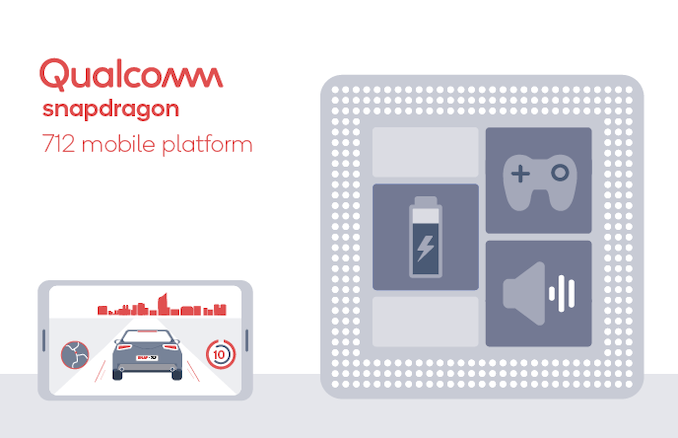
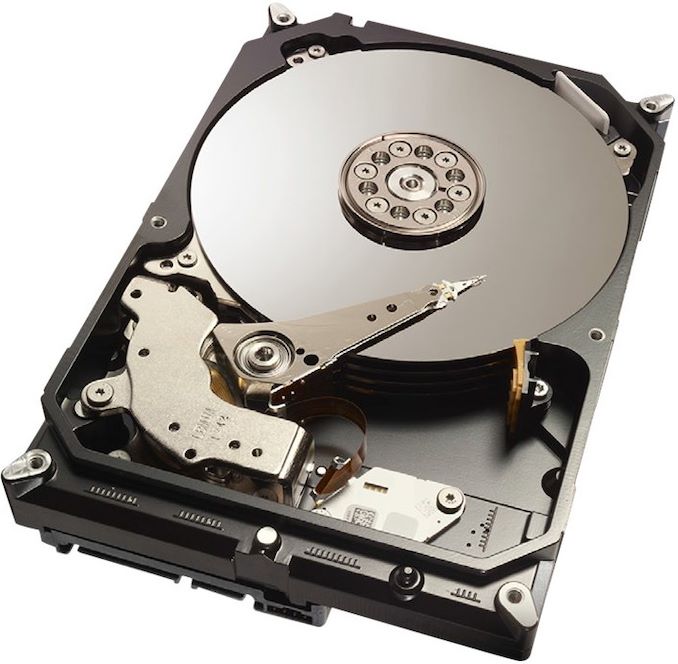

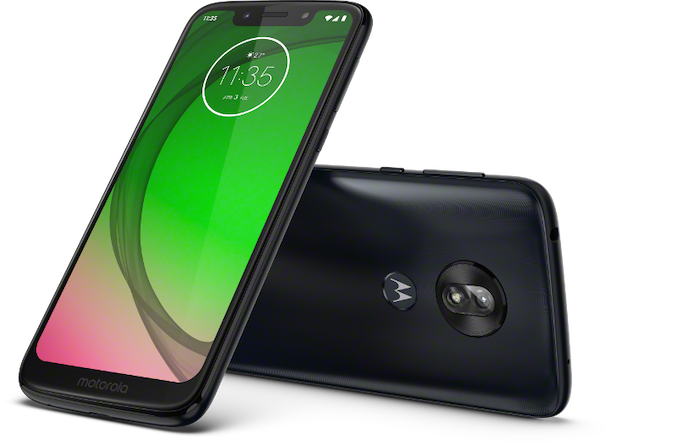



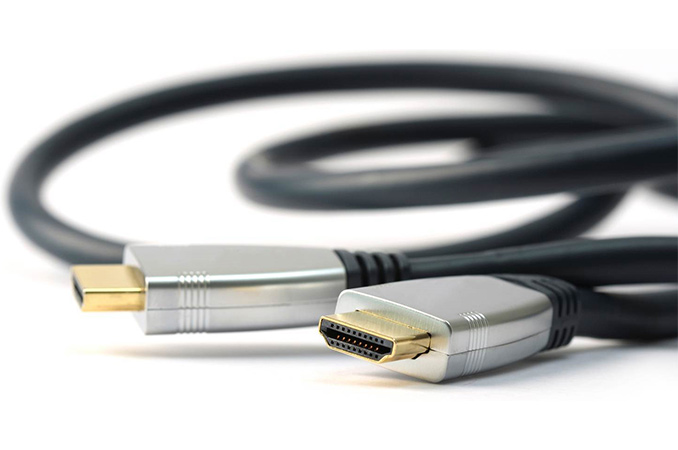
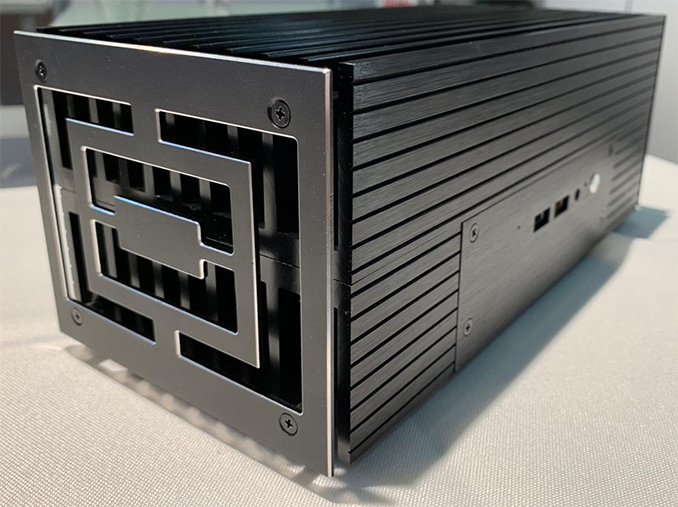
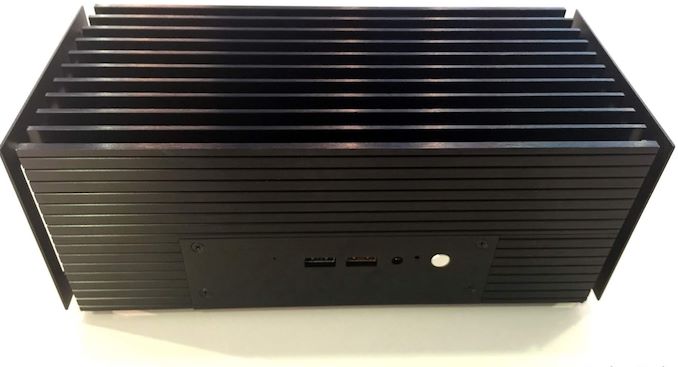
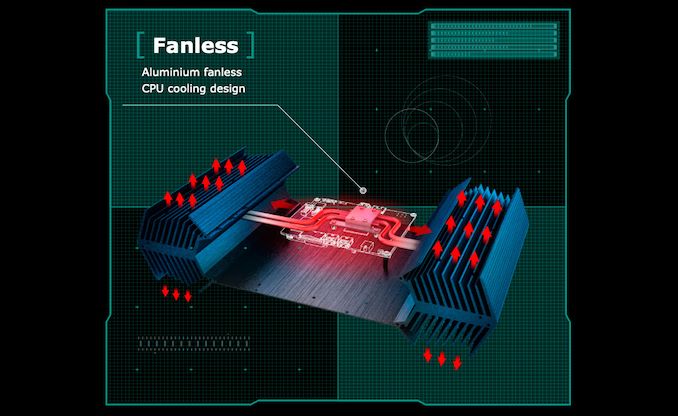

















Bookmarks